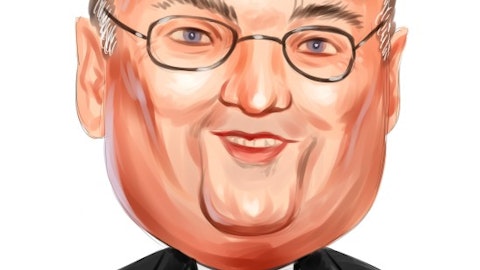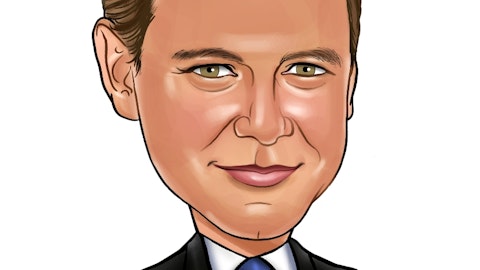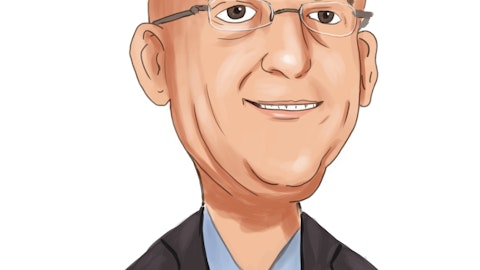Aaron Wukmir: Great. Awesome. Very helpful. And then just a quick follow-up. I think you might have mentioned this as well in the remarks, but can you describe just a little bit what you’re seeing now in the international markets and what your plans are sort of there? Would you consider that a meaningful priority for you guys? And then also on the flip side, are you seeing any disruption in the domestic markets at all?
Pat Miles: Let me answer the international thing first. I would tell you that one of the things that we want to do is we want to be very deliberate. And so when we go into a marketplace, we want to be all in. And so our early experience in Australia has been awesome. So New Zealand and Australia are very — are not huge markets, but I got to tell you, we’re doing great surgery in those markets with people who know how to deliver great surgery. And that’s where it’s like we realize that the precursor to a great business is doing great work. And so our enthusiasm as it relates to the contribution in the years to come from Australia and New Zealand is very, very high. We started to lay the foundation for Japan. We will do the same thing in Japan.
Japan is a great market, and it’s a big market. I think from a surgical perspective, they view surgery in a very similar vein as we do. And so as we think of the international contribution, we don’t feel like we have to be worldwide. What we want to do is we always talk about being narrow and deep. And so the interest there becomes just left. How do we continue to follow the very directive that we committed to in the early phase of the recreation of this company? As it relates to the domestic market, I think that there’s a lot of disruption. I think that we’re irritating people, which is the intent. And I think that the global novation news creates uncertainty. And I think that there’s also a lethargy in the companies that aren’t spine focused.
And so to me, I think we’re sitting in a very opportune space of great opportunity in the international market, some uncertainty for us to exploit in the domestic market, and we find ourselves in a very good place.
Aaron Wukmir: Awesome. Yes. That’s very helpful. Thanks for taking the questions and congrats again on the strong quarter.
Operator: All right. Our final question is from Sean Lee with H.C. Wainwright. Please go ahead.
Sean Lee: Congrats on the great quarter. And thanks for taking my question. Moving back to the prepared remarks where you mentioned the increase in surgeon training. So I was wondering what’s the cell cycle, I guess, like for the PTP how long does it take for a certain 2 country training to start using the PTP in their practice and then move on to become a repeat customer? And what’s the rate of these certain conversions?
Pat Miles: Sean, if you could tell us that, we would be forever indebted. No, it’s like each of the individual surgeons has different needs, and they come to us with different sets of experiences. And so one of the challenges is what are the list of requirements to ultimately prepare somebody for them to feel comfortable in applying the procedure into surgery. And believe you me, it’s within our interest to make sure that they are profoundly confident and comfortable. And so one surgeon may need a single cadaveric experience and they come to a course and they start doing cases. Other surgeons may need a course, they may need to go watch a surgery. They may need to go — they may need a proctoring surgeon into their surgery, and they may be very, very slow to uptake.
And so it’s profoundly different for each individual surgeon. And the one thing I know, and this should provide you great comfort, is the surgeons don’t want to make it in a fix. And I think that they’re profoundly careful. And so they’re going to take their time. And sometimes they need to be competed into it. It depends upon the marketplace. But I got to tell you, there’s numerous geographies out there where PTP is on such an upswing that the surgeons feel forced to do it because they’re losing patients for not doing it. And so we are profoundly confident. I think the publications all suggest that this is an absolutely predictable reproducible experience, but we have to respond to the individual needs of the respective surgeons to make sure that it’s predictable.




